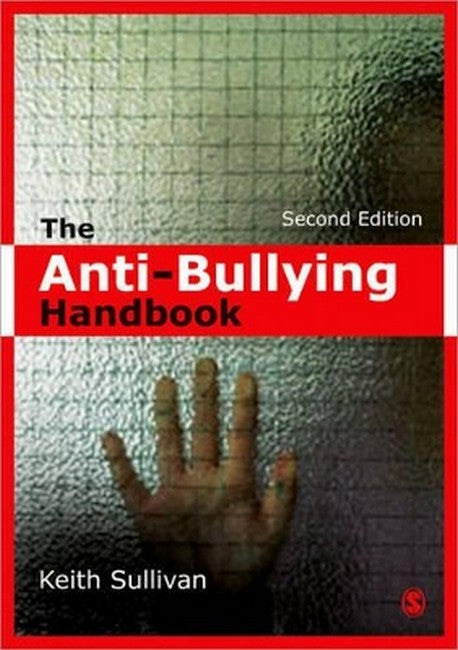Keith Sullivan is a widely published author. He is professor of Education at the National University of Ireland, Galway.
Request Academic Copy
Please copy the ISBN for submitting review copy form
Description
PART ONE: DEFINING AND DESCRIBING BULLYING Introduction What We Know about Bullying The Bullying Triangle and the Bullying Dynamic Types of Bullying 1: Racist Bullying, Bullying of Special Educational Needs Children, Homophobic Bullying and Sexual Bullying Types of Bullying 2: Cyberbullying PART TWO: PHILOSOPHY, PLANNING AND POLICY How to Create an Anti-Bullying Initiative Developing a Philosophy About Bullying Planning and Information Gathering Creating a School Anti-Bullying Policy PART THREE: PREVENTATIVE STRATEGIES Strategies for Teachers: Practice, Pedagogy and Learning Strategies for Teachers: Understanding Social Relationships, Creating Safe Classrooms Interactive and Experiential Strategies Harnessing the Power of the Peer Group The School Environment PART FOUR: INTERVENTIONS Peer Mentoring and Peer Mediation The Support Group Method A Circle of Friends The Pikas Method of Shared Concern CPR: Collaborative Problem-solving and Resolution PART FIVE: FOLLOW-UP AND CONCLUSION Follow-up and Conclusion APPENDICES Appendix 1 A School Anti-Bullying Policy Appendix 2 Using Bullying Scenarios Appendix 3 Ethics and Confidentiality Appendix 4 Ice Breakers
'This book is a welcome and refreshing addition to the titles on bullying. It will be very useful for a broad audience of people concerned about the important problem of school bullying; educators will find it particularly valuable. I greatly appreciate the humanistic, constructivist perspective taken by this author, and by extension, the focus on non-punitive approaches to deal with the problem. The socio-ecological view of the problem is consistent with current "systems" understanding of this behavior. This is a practical book, filled with suggestions of a variety of sound strategies for preventing and intervening in bullying situations. The preventative strategies go beyond the typical anti-bullying programs and describe pedagogical methods to create an environment that discourages bullying. The preventive strategies include the non-punitive methods that I think do not get sufficient attention. The format of the text is quite appealing; the layout is reader-friendly, and the figures are excellent. They present the text material in a visual way that helps readers understand the relationships among concepts. I heartily recommend this book to all who would like a fresh perspective and practical, usable ideas to apply in their own settings' - Sheri Bauman, Ph.D. Director School Counseling Program Editor, Journal for Specialists in Group Work

